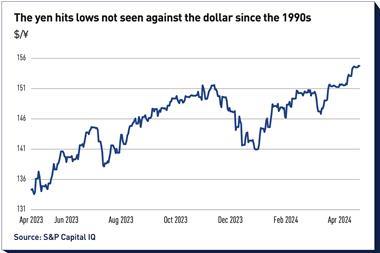How have American investors adjusted their philosophy and strategy after a three-year market downturn? Are they better prepared to avoid new pitfalls? Defined contribution (dc) plans’ members look a little wiser, willing to seek financial advice and better diversify their portfolios. Investors like pension funds are re-defining the balance between passive and active management, increasingly adopting enhanced indexing.
Financial Engines offers an interesting snapshot of how employees are changing their attitude towards investing for retirement. This is a Californian internet company that offers online financial advice to over 3.2m participants in 900 DC plans. According to its Q1 2003 survey, access to employer sponsored investment advice is helping employees prepare for a more secure retirement, increasing savings, reducing company stock concentrations, adjusting portfolio risk and building wealth. Around 80% of employees who used the Financial Engines service discovered they had to save more in order to achieve their retirement goals: 20% of users implemented advised savings increases, which were an average of 40%. More than half of users (58%) had too much company stocks in their portfolios: 85% of them accepted the recommendation to reduce these holdings. The majority (55%) had also an inappropriate risk level for their time horizon to retirement, with 93% taking too much risk and 7% not taking enough risk: 35% accepted the advice to adjust their level of risk. In the end, 80% of users reported that they were confident about retirement security versus 58% of non-users.
The problem is that, notwithstanding what happened after the bursting of the bubble, it is still a minority of employees who uses such advice services. Among participants in the 900 plans connected to Financial Engines, 14% adopt the service after one year, 26% after two years and 48% after three years. Adoption rates are somewhat better if the employer sponsored plan gives employees internet access: 24% after one year, 43% after two years and more the 50% after three years.
Among institutional investors, TIAA-CREF is leading the trend in favour of enhanced indexing. The $280bn (E243bn) pension system for teachers and university employees (which also manages mutual funds and offers other investment services) has always been known for combining passive and active strategies in its equity portfolio. Until last year that typically meant that around 65% of the portfolio was index-based and 35% was actively managed (this proportion varied depending on how the managers viewed the market), but there was no interaction between the two teams. That is why the pension fund took a hard knock with Enron. According to its executives, its active managers had been aware of the troubles at the energy trading company before its stocks started plummeting in 2001, but they didn’t share their insight with the passive managers and anyway they couldn’t have affected the indexed portfolio. Now this organisation has changed to a unified equity portfolio, where active managers’ stock picking can influence the way the indexed portfolio is built.
The new structure is called “Dual investment strategy”: the active managers select a small number of stocks – not more than 50 – which they strongly believe will perform in a very different way compared to the average market, either much better or severely worse. Then they pass on the list to their colleagues in the passive team, who use the information to overweight or underweight those very stocks compared to the benchmark. The new approach is a little more risky than the old one, but it is expected to produce returns within 2 to 4% of the benchmark over one-year and beat the benchmark over time.
According to the most recent survey by the pension fund consultant Greenwich Associates, 6% of US pension funds’ equity assets were in enhanced index funds at the end of last year and the new philosophy is catching on. The purpose is adding value by avoiding losers, but that rarely means completely staying out of big companies that are included in benchmarks.












No comments yet